Choose your municipality
There are several municipalities connected with The Green Menu, check whether your municipality is participating or choose for the national page.
Choose you menu card
There are several different menu cards. Choose a buildingtype down below and instantly start with the sustainable options!

As with space heating, most country estates hot tap water is heated with gas. Gas is a fossil fuel, so CO2 is released during combustion. Saving energy for the heating of tap water can therefore be of great environmental benefit. Often installations that generate heat sustainably, such as an air heat pump, can also be used for hot tap water, see space heating. But there are also systems that only heat your tap water, sometimes useful in combination with infrared panels. And did you know that by recovering heat in your bathroom, your installation has a higher efficiency? Good for your wallet and the environment.
A solar boiler consists of a boiler and a panel that looks very similar to a solar panel. However, the collected sunlight is not converted into electricity, but is used to heat (tap) water. Collectors on the roof ensure that the liquid in the plate or pipes is heated up. The heated liquid is led to a storage tank with water. This way, the water in the storage tank heats up. If the water is not warm enough, an after-heater (high-efficiency combination boiler, electrical element or heat pump) will be added. Placing solar collectors could be a challenge for monumental buildings, because the elements have to be placed out of sight on the roof. The solar boiler is less viable for small households with a high-efficiency combination boiler.
An innovation is a non-visible system in which pipes are installed under roof tiles after the tiles have been temporarily removed from the roof. This gives the entire roof surface the additional function of a solar collector.
A solar boiler consists of a boiler and a panel that looks very similar to a solar panel. However, the collected sunlight is not converted into electricity, but is used to heat (tap) water. Collectors on the roof ensure that the liquid in the plate or pipes is heated up. The heated liquid is led to a storage tank with water. This way, the water in the storage tank heats up. If the water is not warm enough, an after-heater (high-efficiency combination boiler, electrical element or heat pump) will be added. Placing solar collectors could be a challenge for monumental buildings, because the elements have to be placed out of sight on the roof. The solar boiler is less viable for small households with a high-efficiency combination boiler.
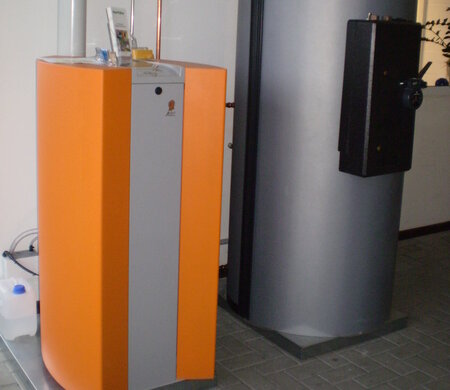
A heat pump boiler is a compact heat pump connected to a cylinder that uses ambient air or ventilation air to heat tap water. The system uses heat from the ventilation air to heat tap water up to 60 °C. The cooled ventilation air is sent outside. This heat pump system is not intended for space heating but only for the generation of hot tap water. A heat pump boiler is often used as a replacement for a ventilation system (mechanical extraction) or as a replacement for an electric boiler system.
A heat pump boiler is a compact heat pump connected to a cylinder that uses ambient air or ventilation air to heat tap water. The system uses heat from the ventilation air to heat tap water up to 60 °C. The cooled ventilation air is sent outside. This heat pump system is not intended for space heating but only for the generation of hot tap water. A heat pump boiler is often used as a replacement for a ventilation system (mechanical extraction) or as a replacement for an electric boiler system.
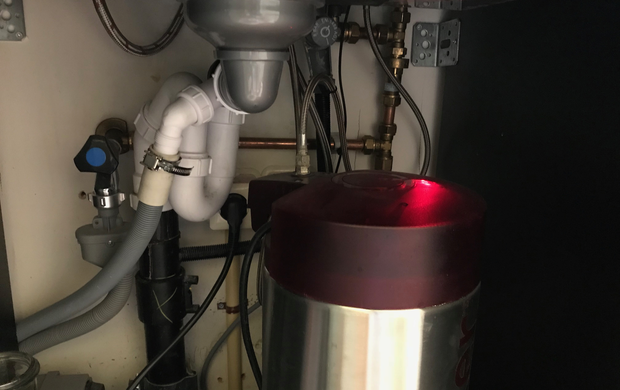
The close-in boiler is an energy-saving alternative to a hot water loop where the tap water loses a lot of energy over a long distance. With short and varying use of hot tap water, it can be interesting to install an electric close-in boiler per water point. A close-in boiler consists of an electric heating element for heating the tap water and a storage tank with a capacity of 5 to 15 litres. In a close-in boiler, water is continuously kept warm so that you have immediate hot water. The disadvantage is that the boiler uses more energy and takes up more space than a continuous flow heater. But compared to a continuous flow heater, a close-in boiler has a smaller electricity connection. There are also ‘smart’ boilers that regulate the temperature in the boiler according to use, which saves in energy consumption.
The close-in boiler is an energy-saving alternative to a hot water loop where the tap water loses a lot of energy over a long distance. With short and varying use of hot tap water, it can be interesting to install an electric close-in boiler per water point. A close-in boiler consists of an electric heating element for heating the tap water and a storage tank with a capacity of 5 to 15 litres. In a close-in boiler, water is continuously kept warm so that you have immediate hot water. The disadvantage is that the boiler uses more energy and takes up more space than a continuous flow heater. But compared to a continuous flow heater, a close-in boiler has a smaller electricity connection. There are also ‘smart’ boilers that regulate the temperature in the boiler according to use, which saves in energy consumption.
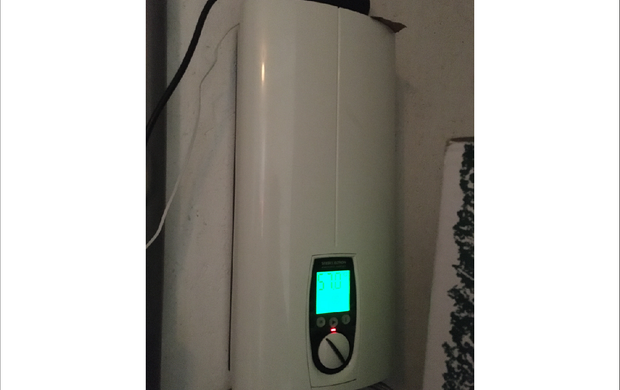
There are several ways to heat the hot tap water of your building without gas. Systems such as electric boilers and heat pump boilers take up a relatively large amount of space. An electric continuous flow heater can offer a compact alternative. An electric continuous flow heater only heats the water that is actually used. The heating element switches on when you open the hot water tap and immediately heats the water that flows through it. For brief and varied usage, it is interesting to install an electric continuous flow heater because it lets you heat more efficiently. A instantaneous water heater uses less energy and takes up less space than an electric boiler. However, an electric continuous flow heater does require a larger electricity connection.
There are several ways to heat the hot tap water of your building without gas. Systems such as electric boilers and heat pump boilers take up a relatively large amount of space. An electric continuous flow heater can offer a compact alternative. An electric continuous flow heater only heats the water that is actually used. The heating element switches on when you open the hot water tap and immediately heats the water that flows through it. For brief and varied usage, it is interesting to install an electric continuous flow heater because it lets you heat more efficiently. A instantaneous water heater uses less energy and takes up less space than an electric boiler. However, an electric continuous flow heater does require a larger electricity connection.
If you are connected to a heat network or collective heat pump with a supply of up to 50 °C, you will need a separate tap water supply. A booster heat pump is suitable for heating tap water up to 65 °C with the heat of the central heating water. Even in summer, when no hot central heating water is supplied, this booster heat pump can make tap water from the central heating water. The water is stored in a boiler tank. Depending on the tap water demand, this can be a tank of 120 litres up to more than 300 litres.
If you are connected to a heat network or collective heat pump with a supply of up to 50 °C, you will need a separate tap water supply. A booster heat pump is suitable for heating tap water up to 65 °C with the heat of the central heating water. Even in summer, when no hot central heating water is supplied, this booster heat pump can make tap water from the central heating water. The water is stored in a boiler tank. Depending on the tap water demand, this can be a tank of 120 litres up to more than 300 litres.
With heat recovery in the shower drain and shower tray, the heat exchange takes place in the shower drain or directly under the shower tray. Dirty shower water that flows into the drain when showering flows adjacent to the cold water supply. As a result, less energy is required to get the shower water to the right temperature. A heat recovery shower drain or shower tray is higher than a conventional shower tray, so take an elevated shower tray and the height of the shower area into account.
With heat recovery in the shower drain and shower tray, the heat exchange takes place in the shower drain or directly under the shower tray. Dirty shower water that flows into the drain when showering flows adjacent to the cold water supply. As a result, less energy is required to get the shower water to the right temperature. A heat recovery shower drain or shower tray is higher than a conventional shower tray, so take an elevated shower tray and the height of the shower area into account.
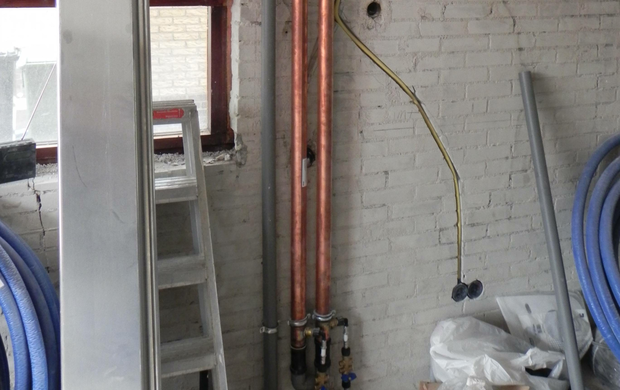
In households, most hot tap water is used in the bathrooms. If you manage to reduce this consumption, you will need smaller all-electric heat pump and boiler tanks. This will save costs and space for the installation. Heat can be recovered from the dirty shower water, which is being flushed away hot. With shower pipe heat recovery, the vertical outlet pipe under the shower is replaced by a copper shower pipe consisting of an inner pipe with (hot) wastewater and an outer casing with clean (cold) water. Heat exchange takes place between these two layers, so that the cold (clean) water is pre-heated without consuming energy.
In households, most hot tap water is used in the bathrooms. If you manage to reduce this consumption, you will need smaller all-electric heat pump and boiler tanks. This will save costs and space for the installation. Heat can be recovered from the dirty shower water, which is being flushed away hot. With shower pipe heat recovery, the vertical outlet pipe under the shower is replaced by a copper shower pipe consisting of an inner pipe with (hot) wastewater and an outer casing with clean (cold) water. Heat exchange takes place between these two layers, so that the cold (clean) water is pre-heated without consuming energy.
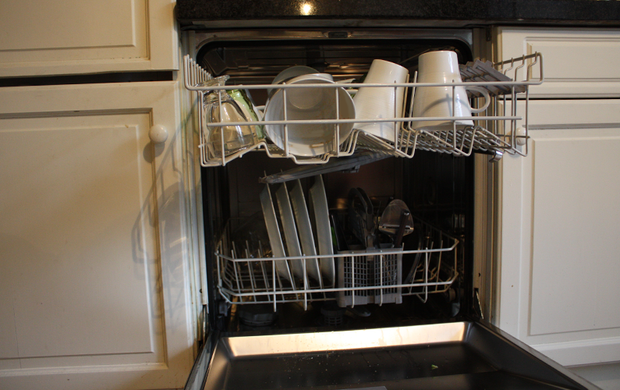
A washing machine and dishwasher use electric heating elements to generate hot water. Because a sustainable heating system or gas boiler can do this more efficiently, it is convenient to use this system for these appliances as well. With a hotfill, you can connect the white goods to a hot water tap. In this way, the machine does not have to heat up the water first to be able to wash, which of course saves a lot of electricity. The hotfill is particularly efficient if the hot water is generated sustainably, for example by a heat pump or solar boiler. Not all washing machines have both cold and hot water connections, in which case a hot water selector needs to be installed.
A washing machine and dishwasher use electric heating elements to generate hot water. Because a sustainable heating system or gas boiler can do this more efficiently, it is convenient to use this system for these appliances as well. With a hotfill, you can connect the white goods to a hot water tap. In this way, the machine does not have to heat up the water first to be able to wash, which of course saves a lot of electricity. The hotfill is particularly efficient if the hot water is generated sustainably, for example by a heat pump or solar boiler. Not all washing machines have both cold and hot water connections, in which case a hot water selector needs to be installed.
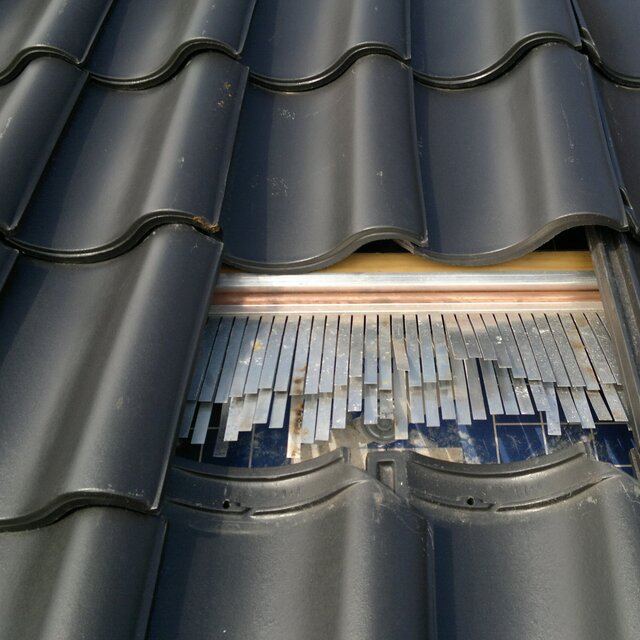
Tap water can be heated from solar energy with solar collectors. This innovation is a non-visible system. A grid with pipes is placed under the roof tiles. The entire roof surface gets the extra function of a solar collector, without being visible!
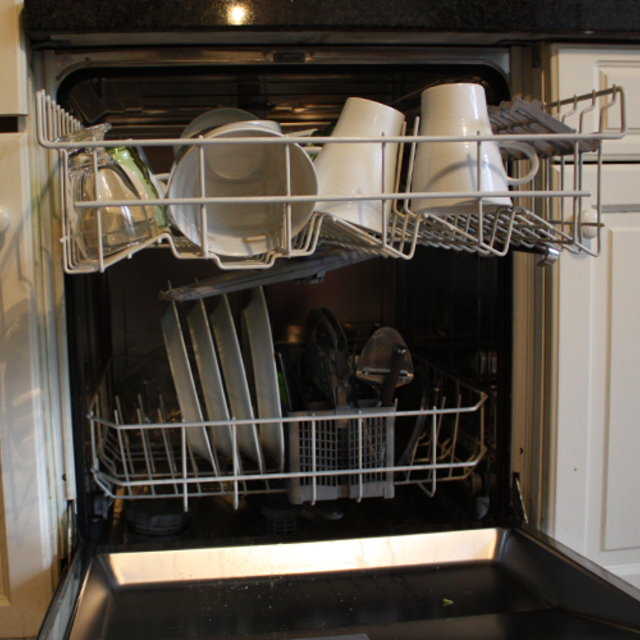
Saving energy can easily be achieved by not pre-rinsing the dishes by hand, loading the dishwasher properly or by washing it at a lower temperature (Eco program). It can also pay off to replace your old dishwasher with a new eco-version. Another possibility is a hotfill water selector, which reduces (or even eliminates) the need for a dishwasher to heat up the water it uses.